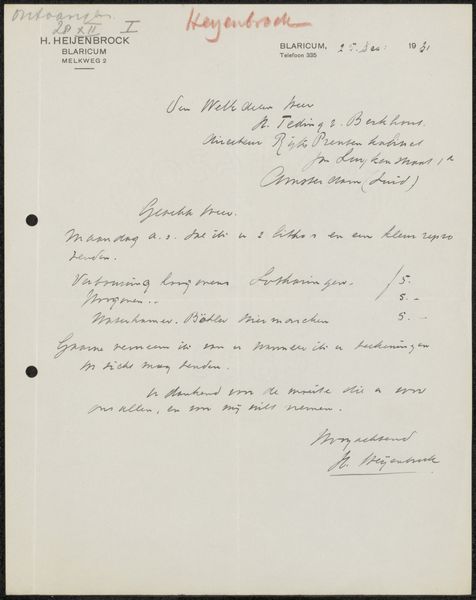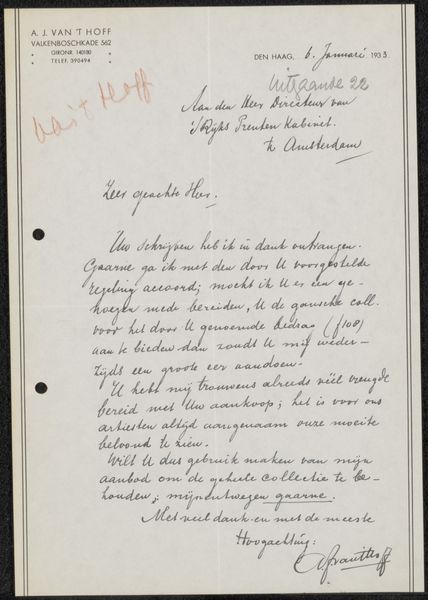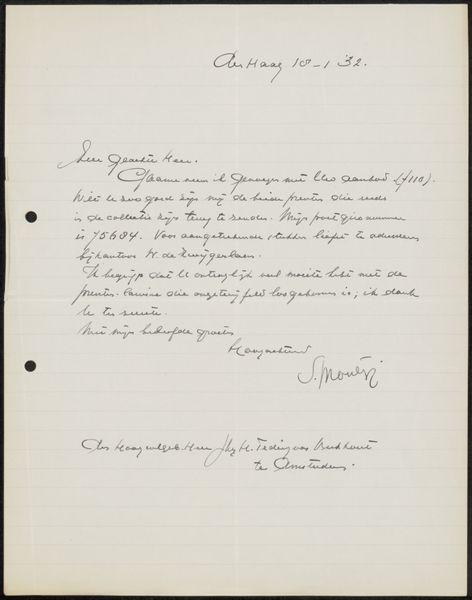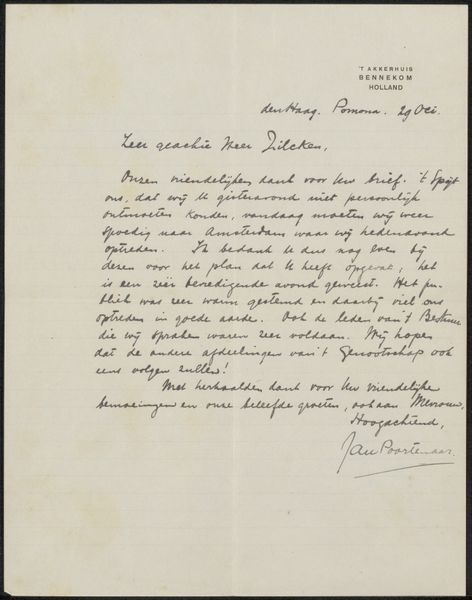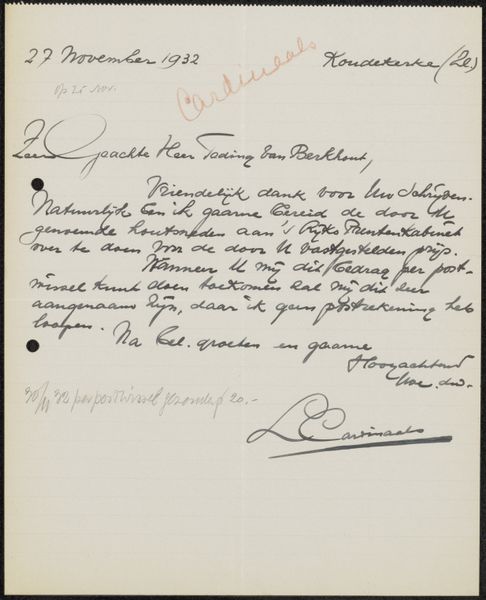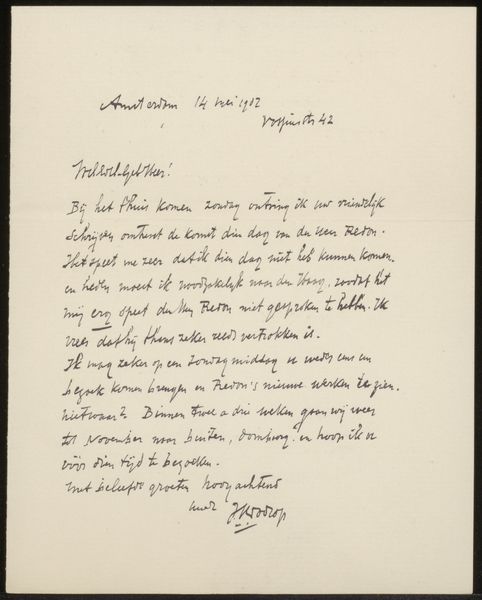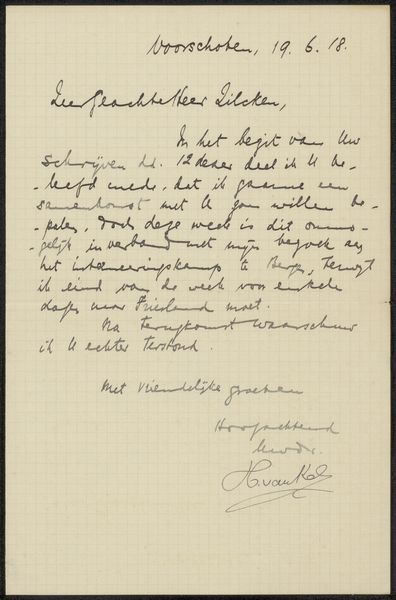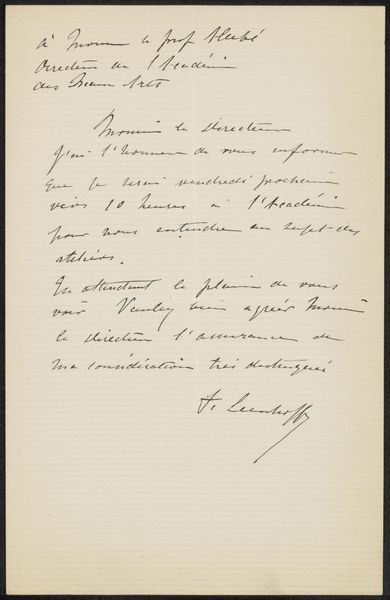
Brief aan jonkheer Hendrik Teding van Berkhout (1879-1969) Possibly 1932
0:00
0:00
drawing, paper, ink
#
portrait
#
drawing
#
paper
#
ink
#
modernism
#
calligraphy
Copyright: Rijks Museum: Open Domain
Curator: Looking at "Brief aan jonkheer Hendrik Teding van Berkhout", dating possibly to 1932, an ink drawing on paper now held at the Rijksmuseum, I’m immediately drawn into the elegance of its calligraphic form. What are your first impressions? Editor: It feels surprisingly intimate, despite being a formal letter. There's a delicacy to the lines, a rhythm like music on the page. I can almost hear the scratching of the pen. Does it strike you the same way? Curator: Precisely! A.J. van 't Hoff clearly intended for this letter to transcend mere correspondence. It merges the practical with the aesthetic, reflective of Modernist principles, transforming everyday communication into art. What I'd love to understand is the effect of these kind of approaches on society and imagery! Editor: You know, it makes me consider the audience—Jonkheer Hendrik Teding van Berkhout. Imagine receiving this. Would its artistic merit overshadow the message? Would it enhance his perception of the sender? It’s more than a missive; it's an act of cultivated self-presentation, what I'd like to think it suggests. Curator: Ah, absolutely! I agree. It becomes a statement, subtly communicating about the writer's sensibilities and cultural standing, blurring the lines between public and private personas in this specific moment in art history and culture. Editor: Yes, it also makes you consider accessibility to art outside the establishment. This shows that anyone, anywhere, could embed meaning and intention through this kind of approach. Do you see other potential readings we might draw? Curator: Well, it prompts consideration of handwriting as an inherently artistic act, one influenced by socio-economic class and artistic trend. Today, in a digital world, it feels almost… nostalgic. But that’s its beauty; a fragile dance across time that beckons conversation. Editor: True. It becomes more about personal history than simple communication. Looking back, the letter transcends a commercial and private function. I leave feeling like the gesture of writing and calligraphy elevates its purpose to that of an art object in its own right.
Comments
No comments
Be the first to comment and join the conversation on the ultimate creative platform.
